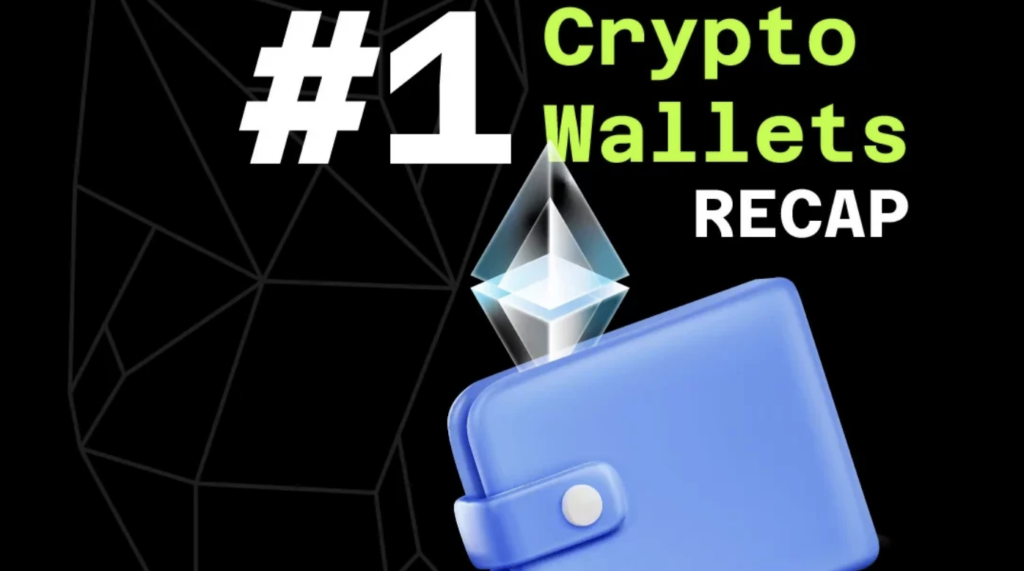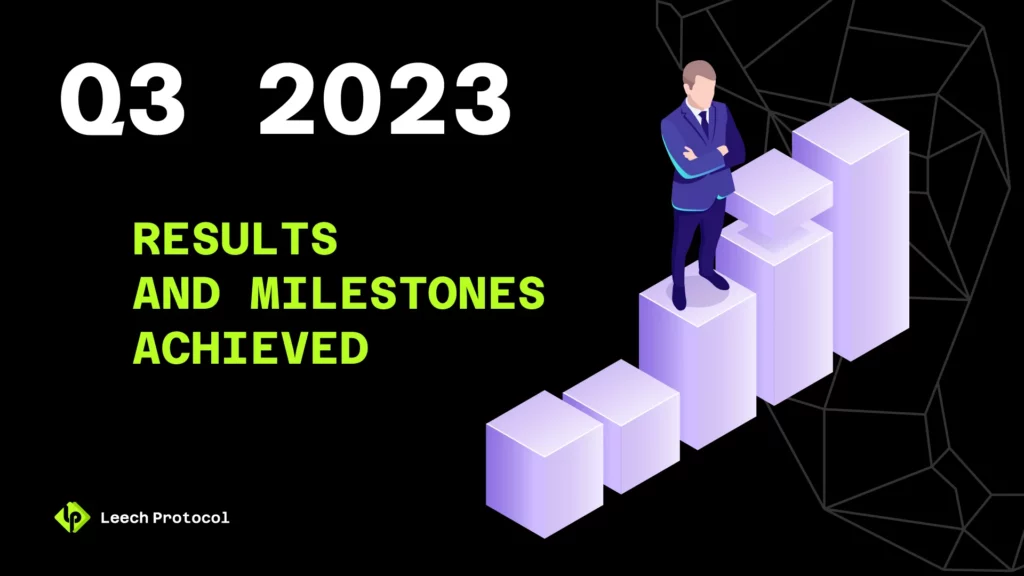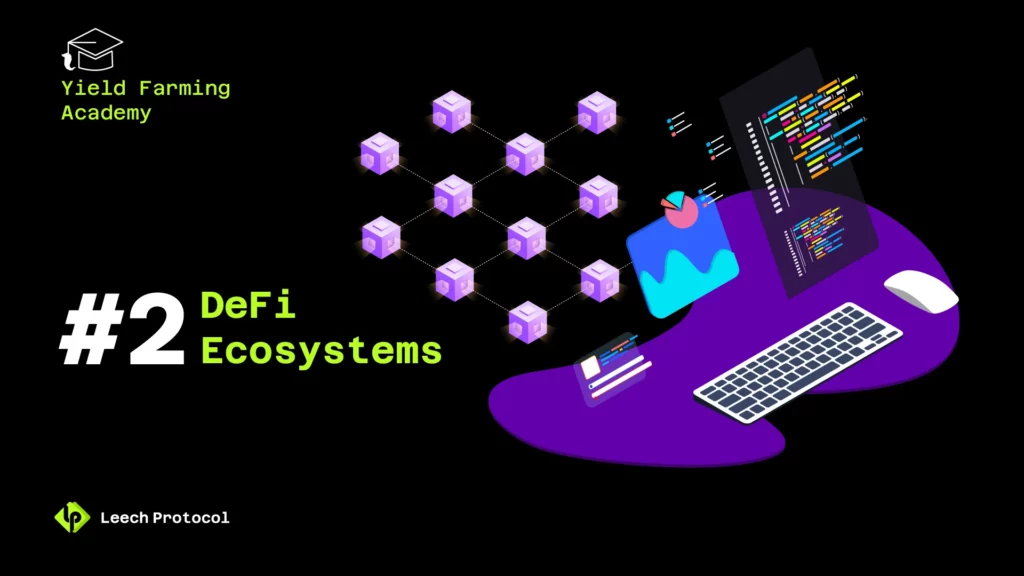Home | News & Insights Yield Farming Academy #2 Defi Ecosystems This is the second lecture of a series on “Leech Protocol” from our Yield Farming Academy. In this tutorial, we will review the DeFi Ecosystems. We will cover the following topics in this session: So make yourself comfortable, grab your favorite beverage if you like, and let’s kick offour tech journey! What is DeFi in general? Decentralized finance, or DeFi, represents a new wave of innovation in the financial sector that initially began with the advent of the Ethereum blockchain and its smart contracts. So that we can understand Defi better, let’s begin by exploring its origins. The traditional stock market, where you can buy and sell stocks, has an entire ecosystem of tools at its disposal in working with assets. This ecosystem includes exchanges for trading equities, lendings, futures and options markets, synthetic assets, derivatives, and much more. This all began in the 17th century with the first stock exchange in Amsterdam and the first derivatives exchange in Japan. The modern stock market offers a variety of financial instruments that possess interconnectivity. For example, you can buy shares through an American broker, pledge them as collateral, take out a loan, and then invest the loan in an index fund. However, despite all of these possibilities, existing financial instruments have many limitations and problems that Web 3.0 technologies can solve. For instance, exchanges only operate at certain times, which creates inconvenience for trading on the other side of the world. Moreover, permission and queue waiting are required to obtain loans secured by various assets. The interfaces of these tools could be more appealing and convenient. Web 3.0 technologies offer solutions to these problems. The Ethereum blockchain and its Solidity programming language allow the creation of a smart contract that can operate on a 24/7 basis worldwide. Interactions with smart contracts are accessible from anywhere and do not require a KYC for use. Applications built on smart contracts can perform the essential functions of stock market instruments. Thus, it is possible to improve the world of financial instruments by creating them on the blockchain. In 2019, the first DeFi projects appeared on the Ethereum blockchain, such as Uniswap for asset exchange and MakerDAO for issuing stablecoins backed by Ethereum. These were the first steps in creating a new evolutionary financial world stage. What is DeFI Ecosystem? Decentralized Finance (DeFi) represents an ecosystem of financial instruments built on blockchain and web3 technologies. In 2020, a period often referred to as the “DeFi Summer,” decentralized applications, or dApps, experienced explosive growth. Many new projects emerged to disrupt traditional finance during this time, and even separate blockchains were explicitly created for the new era of financial instruments. For instance, Binance Smart Chain was made as an alternative to Ethereum, as transaction fees on the Ethereum blockchain were very high. Subsequently, blockchains such as Polygon, Fantom, and others emerged as well. New DeFi projects quickly appeared on these blockchains, forming a unique Financial ecosystem. Today, there are about 30 categories of decentralized financial instruments and approximately 2,500 working projects. Each of these projects perform specific functions that its developers embedded. Often, these functions were adapted from stock market instruments and improved by implementing Web3 technologies. Developing its own DeFi ecosystem benefits each blockchain, as it creates utility for its main coin, ultimately increasing its market value. In addition to paying for gas transactions, the coin can be used, for example, as collateral in lending protocols. For example, you can get a USDT loan by pledging ETH. Defi applications on each blockchain often interconnect, as they can be built on top of each other. For example, the LIDO protocol allows retail users to become validators and earn rewards by creating new Ethereum blocks. When you deposit ETH into LIDO, you receive a derivative that confirms your position in the LIDO protocol. This derivative is called stETH, and it trades freely on markets. There are also lending protocols that accept stETH as collateral for obtaining loans. You can exchange g stETH and get a USDT loan. The lending protocol is built on the assets from another protocol. This concept is called “DeFi Lego.” All these projects and their interconnections compose the DeFi ecosystem. Components of every DeFi ecosystem Each blockchain’s decentralized finance (DeFi) represents a complex ecosystem of various components and essential centers. DeFi represents these components through different projects that can be divided into categories. Projects in each category perform similar functions. For example, the “Lending” category includes various lending protocols. Here are some types of projects within the DeFi ecosystem and their functions: Liquid Staking: These protocols enable you to become block validators without additional maintenance and earn rewards. Liquid Staking also provides a tradable and liquid token for your staked position. Decentralized Exchanges (DEXs): These are protocols for asset exchanges. They use a peer-to-contract-to-peer model. Some users list assets in smart contracts, while others make asset exchanges. Lending Platforms: These are platforms where users can lend and borrow cryptocurrencies. Interest rates are often determined by supply and demand dynamics within the platform. Yield Farming: These products involve lending or staking cryptocurrencies in return for rewards, often in the form of additional cryptocurrency. Projects in this category can use simple and complex strategies to generate returns. Leech Protocol is a good example in Yield Farming niche. Derivatives: These are blockchain-based contracts that derive value from an underlying asset. These assets can be cryptocurrencies or other real-world assets. Asset Management Tools: These platforms help users manage their crypto investments across chains and products. Liquidity Aggregators: These platforms pool liquidity from various sources to facilitate trading and improve liquidity. Synthetics: These are blockchain-based financial instruments that mimic the value of real-world assets. Options: These are financial derivatives that provide the buyer the right, but not the obligation, to buy or sell an asset at a specific price on or before a certain date. NFT Marketplace: These platforms allow users to create, buy, and sell NFTs



